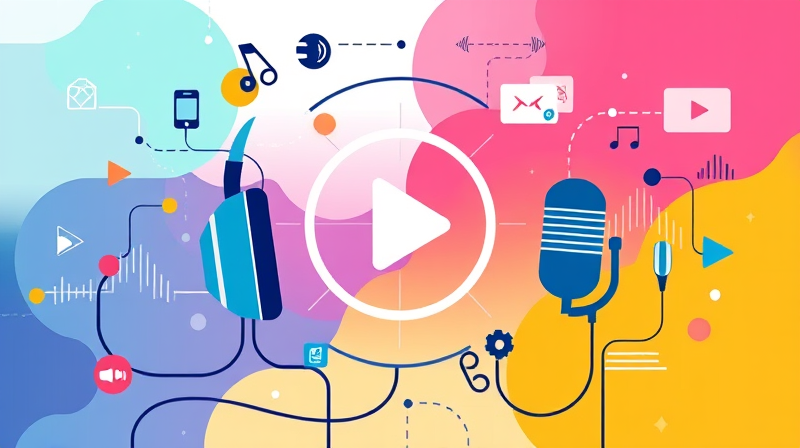In today’s fast-paced digital era, data is everywhere. Yet, the true power of data is unlocked when raw numbers transform into compelling narratives. Data storytelling is the art and science of converting complex data into actionable insights, engaging visuals, and relatable stories that drive critical decisions. In this article, we explore how an analytical view of storytelling can empower users and organizations to make more informed choices.
Data storytelling is not just a trend—it’s a cornerstone for performing meaningful analysis. With the rise of automated narrative generators and advanced visualization techniques, engaging with data is no longer limited to stat charts and dry reports. Instead, narratives offer context, emotion, and clarity, making the data not just understandable, but also inspiring and memorable.
Understanding the Core Elements
To fully harness the power of data storytelling, it is essential to understand its three core components:
- Data Analysis: This is the foundation of any story that matters. It involves gathering clean, reliable data and using methods like descriptive, diagnostic, predictive, and prescriptive analysis to extract meaningful insights.
- Narrative Framing: The narrative is what breathes life into data. Framing the narrative involves contextualizing the insights, letting the audience know the significance behind each data point, and connecting them with real-world implications.
- Visualization Techniques: Data visualizations turn otherwise overwhelming numbers into intuitive images. Whether it’s infographics, interactive dashboards, or real-time graphs, these visual tools are indispensable in making complex data accessible and memorable.
Each of these components plays a unique role, contributing to the overall effectiveness of the narrative. When combined, they create a powerful tool for decision-making and strategic planning.
The Transformative Role of Technology
The landscape of data storytelling is evolving rapidly, largely thanks to breakthroughs in artificial intelligence and machine learning. Innovations such as automated narrative generation have begun to reshape how narratives are constructed by helping to streamline the process of deriving insights from complex datasets.
Technologies like ChatGPT and integrated tools in platforms like Tableau enable real-time data storytelling. These tools transform static data sets into dynamic narratives, aiding organizations in making immediate and informed decisions. As algorithms continue to advance, the ability to craft personalized, interactive stories in a fraction of the time becomes increasingly realistic.
Moreover, generative AI is enhancing the storytelling process by identifying subtle patterns in data that might be otherwise overlooked. This not only brings a new depth to the narrative but also ensures that the insights remain accurate and unbiased, building trust and paving the way for more refined decision-making strategies.
Strategies to Craft an Impactful Story
Crafting a narrative that resonates with your audience requires more than just technical expertise. Here are some strategies to enhance the impact of your data stories:
- Know Your Audience: Tailor your narrative to the audience’s demographics, interests, and unique challenges. This customized approach makes the data significantly more relevant and actionable.
- Simplify Complex Insights: Rather than overwhelming the audience with excessive details, focus on one or two key messages. This reduces cognitive overload and enhances clarity.
- Personalize the Narrative: Make your story relatable. By individualizing the content, you can drive engagement and even improve user satisfaction by up to 40% in certain tech applications.
- Incorporate Emotional Hooks: Use stories and examples that trigger an emotional connection. When data resonates on an emotional level, users are more likely to remember and act on the insights.
The integration of these strategies not only captivates the audience but also builds a bridge between abstract data and tangible business outcomes.
Real-World Impact and Future Prospects
Organizations across various sectors have already embraced data storytelling. Companies like Spotify and Uber exemplify how personalized stories based on data can transform user engagement and strengthen brand loyalty. For instance, personalized campaigns that reflect individual behaviors and trends can greatly enhance customer satisfaction and encourage social sharing.
Despite the benefits, challenges remain, such as ensuring data privacy and preventing misinterpretation. However, the benefits far outweigh these hurdles. Emerging trends such as immersive data experiences and interactive dashboards promise to address these challenges while making data narratives even more dynamic and actionable.
As we look to the future, the integration of generative AI and automated storytelling mechanisms will continue to evolve. These advancements will make data insights more compelling and accessible to users at all levels. With the right tools and strategies, any organization can transform data overload into clear, engaging stories that drive success.
Embracing the Era of Data-Driven Storytelling
Data storytelling is not about replacing human insight—it is about harnessing the power of data to inform, inspire, and guide decision-making. The fusion of advanced analytics, automated technologies, and creative narrative techniques is transforming the way we interpret data.
Every business, whether large or small, can benefit from developing a more analytical view of the stories hidden within their data. As technology continues to innovate, the art of storytelling will only become more sophisticated, enabling organizations to tap into deeper insights and create more meaningful connections with their audiences.
Embrace the challenge of transforming your raw data into stories that matter. The future of analytics is here—dynamic, personalized, and endlessly innovative. Take the first step today and begin your journey towards more actionable, engaging, and transformative data narratives.







